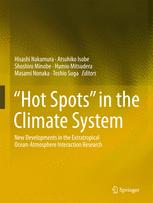

Most ebook files are in PDF format, so you can easily read them using various software such as Foxit Reader or directly on the Google Chrome browser.
Some ebook files are released by publishers in other formats such as .awz, .mobi, .epub, .fb2, etc. You may need to install specific software to read these formats on mobile/PC, such as Calibre.
Please read the tutorial at this link: https://ebookbell.com/faq
We offer FREE conversion to the popular formats you request; however, this may take some time. Therefore, right after payment, please email us, and we will try to provide the service as quickly as possible.
For some exceptional file formats or broken links (if any), please refrain from opening any disputes. Instead, email us first, and we will try to assist within a maximum of 6 hours.
EbookBell Team

0.0
0 reviewsThis book consists of the articles from the special issue of “‘Hot Spots’ in the Climate System” in the Journal of Oceanography, Vol. 71 No. 5, 2015, comprising 9 chapters that cover a wide spectrum of topics. This spinoff book is a collection of papers on the scientific outcomes of a nationwide 5-year project funded by the Japanese Ministry of Education, Culture, Sports, Science and Technology (MEXT) and known internationally as the “Hot-Spot Project.” The academic achievement of the project has gained international recognition, making substantial contribution to unveiling the climatic role of warm western boundary ocean currents, including the Kuroshio, and associated oceanic fronts characterized by sharp temperature gradients and active meso-scale oceanic eddies. Specifically, those warm currents may be called “hot spots” in the climate system, as they intensively release heat and moisture to the atmosphere, thereby acting to organize clouds and precipitation systems and set conditions favorable for recurrent development of storms. This spinoff is a unique collection of the outcome of the particular project. The collected papers cover a wide range of aspects of ocean–atmosphere interaction characteristic of the oceanic fronts and continental marginal seas, unveiled through observational, theoretical, analytical, and numerical investigations. Most of the readers of the book are assumed to be researchers and graduate students who study climate dynamics, physical oceanography, atmospheric science, and air–sea interaction.